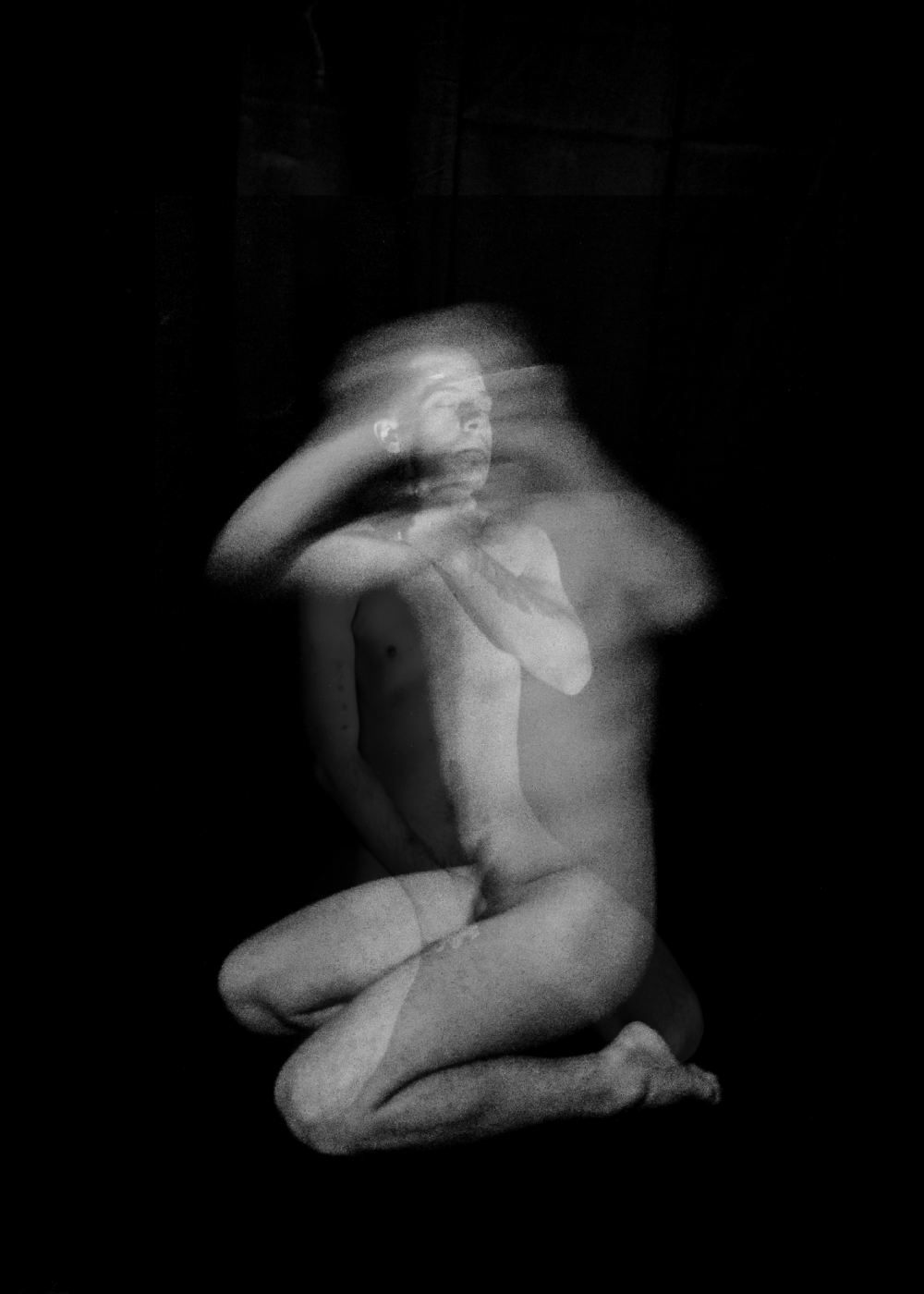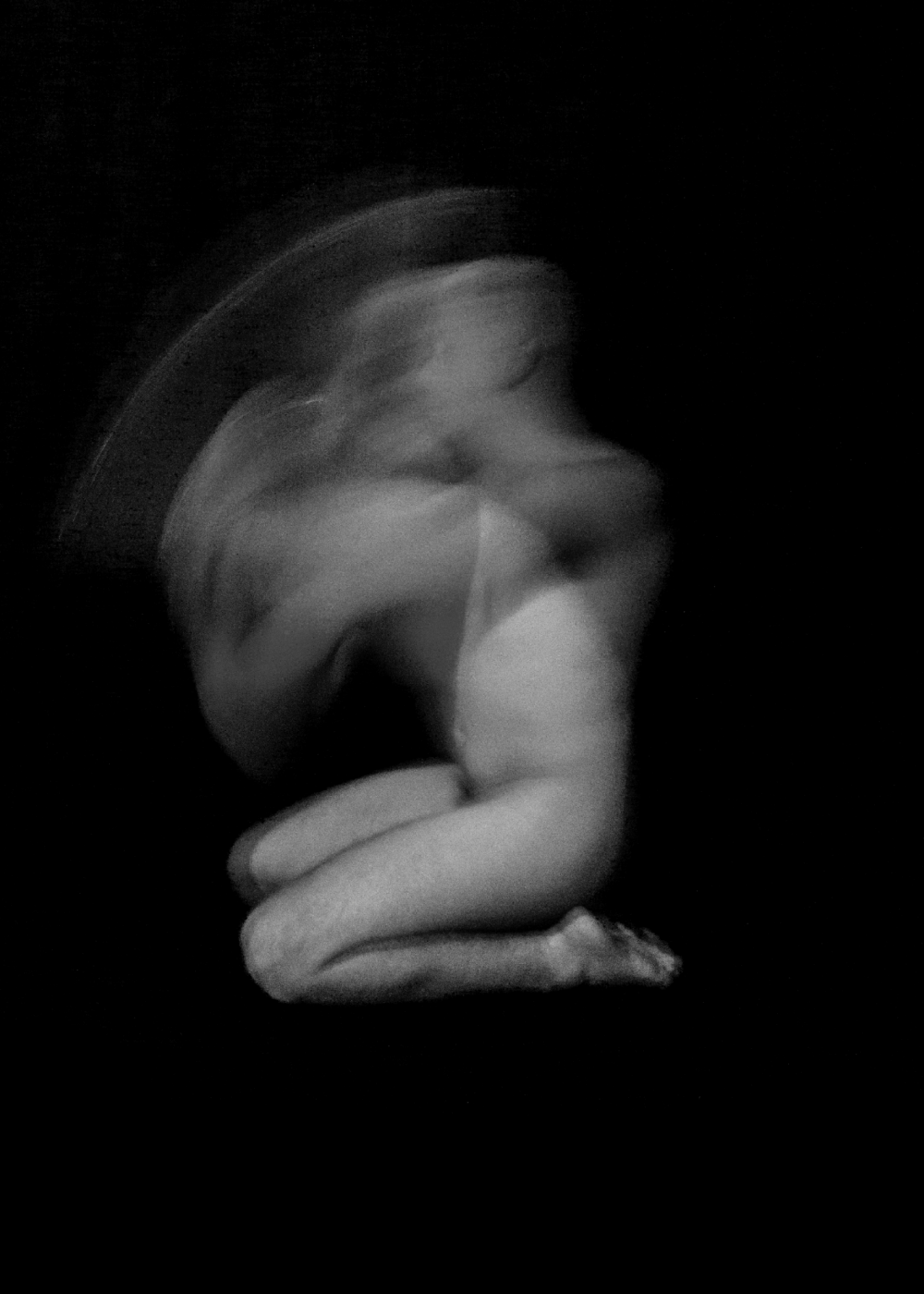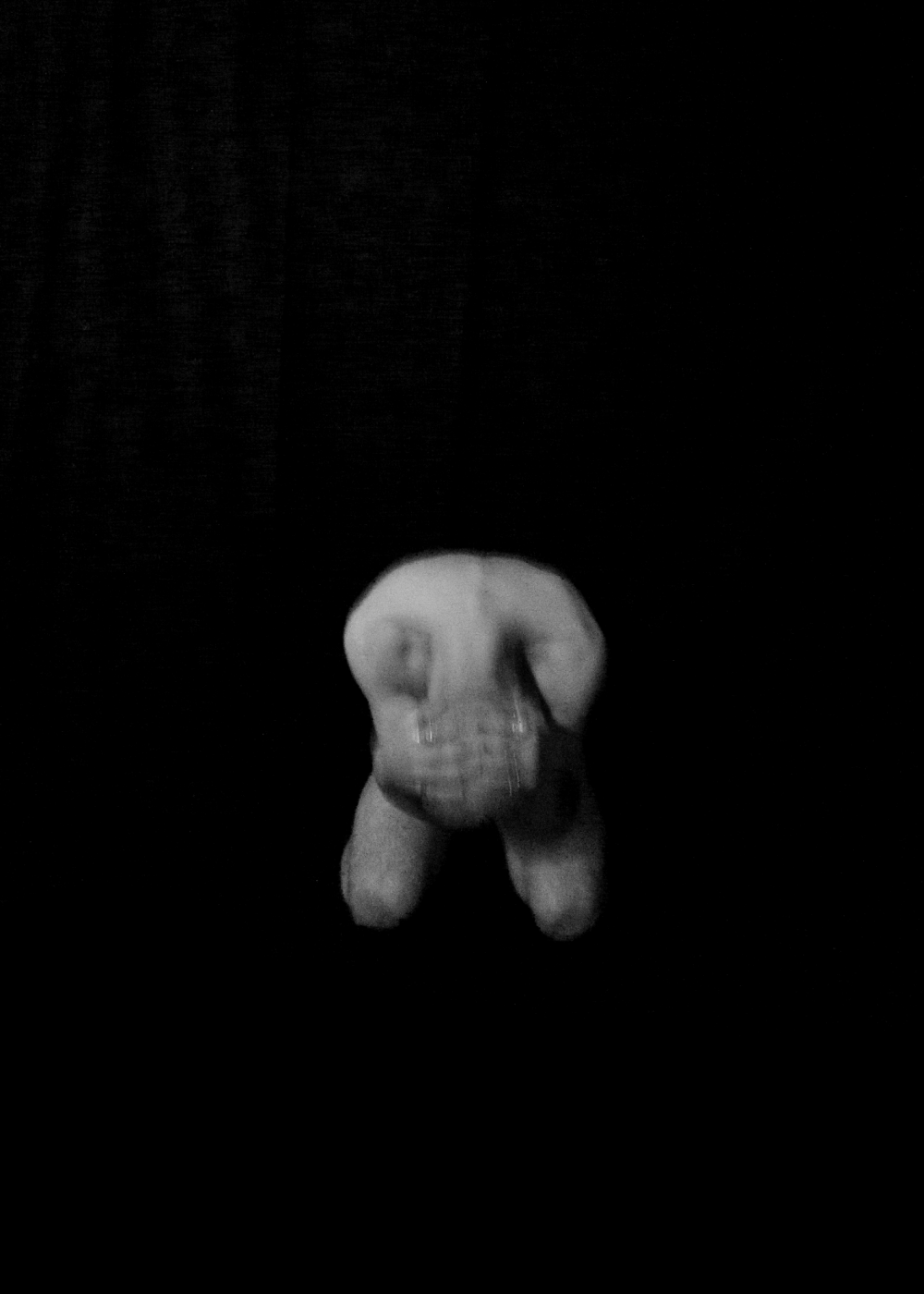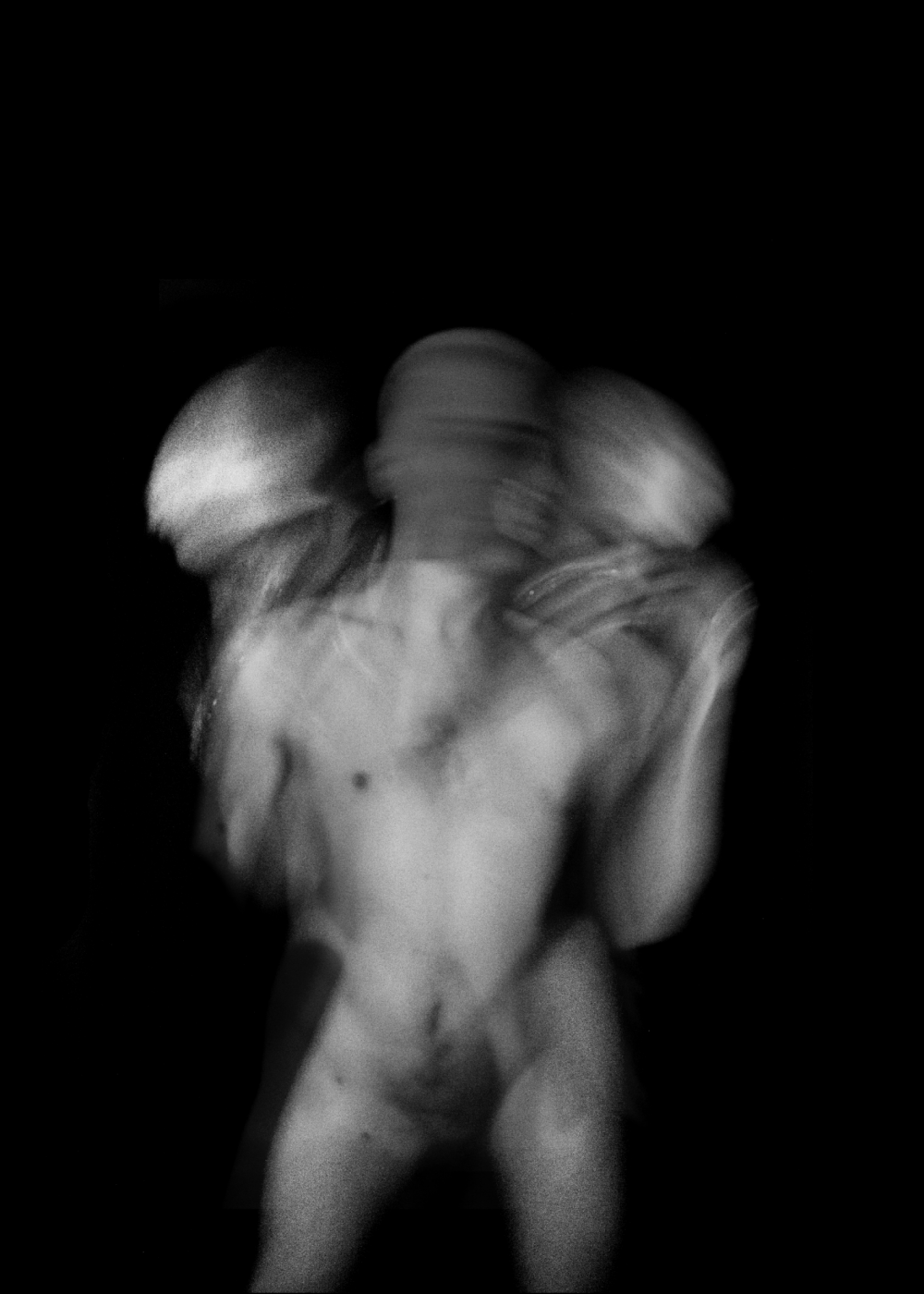- Jobs
- Open Calls
- Events
- Learn
- More
- SUBMIT
Gil Mualem-Doron
Country:
City:
30/01/17 “The very essence of this situation is the fact that I feel I am irrelevant. I have no one to lean on, not even myself. I spend my life trying to make other people happy and I end up alone, disappointed. I'm in a dead-end job, I lost any hope of love, family, relationship, true friend. Where am I going? What am I doing? I am in a lost, desolate place by myself. There is no hope at this point, but the hope lies in the fact that because I've fallen as low as this, there surely must be one way to go. I'm scared of myself. I'm scared that I'm not going to get out of this black hole I find myself in. It's consuming me and I fear that Jason will no longer be Jason at the end of this. That is, if there is an end to the eternal loneliness and madness inside my own head.”
22/10/19 “...Something is going on behind me but in front of me. I can’t quite make sense of it all right now but there is clarity in this. I’m coming to a cataclysm. A dramatic ending of something is on the horizon. I’m fearful and unsteady as I tread through each day with a deepening apprehension and worry that is manifesting itself and pervading every aspect of my life. I’m being made to doubt myself, and for me, I’m scared all of these things are going to either drive me to insanity or worse yet, my demise…”
Jason decided to do the photoshoot and publicize his story as a warning against drug abuse, especially crystal meth. He has started gathering diary entries and writing new material about his experiences aiming to publish it in a book.
Jason’s series is part of the No Man’s Lands project (2016-present).
No Man’s Lands (2016-) is an on-going art photography project that uses a collaborative approach to convey the stories of young men. These are people who have found themselves in limbo or transition due to political, social, mental or economic factors. On the surface, the portraits are of individual men, yet as a whole, they also reflect contemporary global issues such as political persecution, the refugee crisis, racial discrimination, the rights of queer and transgender persons, inequality and homelessness. As part of his socially engaged art practice, Mualem-Doron always had initial conversations with the men he photographed, most of whom he encountered during his travels, in social circles, and online.
These dialogues allowed each participant to be involved in the decision-making process relating to the production of the photographs, including where and how they were portrayed and to reflect on the final results. Further, although the images in this body of work stand alone and can be interpreted in myriad ways, the inclusion of texts based upon these conversations and written by Mualem-Doron or the participants are an integral element of his Mualem-Doron participatory approach. In giving up some control over the process of image-making, the photographs in No Man’s Land embody disparate photographic styles, locations, and diverse aesthetics. However, what unites them and the project is the process through which they were created and the visual traces of it.
Being in no man’s land or in limbo can imply suspension and separation—the space of the hiatus. In a way, it is not unlike the act of photography itself—an act that entails a suspension of time and space and the separation of ‘one’ and the ‘other’. Yet photography, like these in-between spaces and situations, is the result of, and engenders instability and transformation. In socially engaged practices, this instability is the result of the breaking down of ‘fixed’ positions, that of the photographer and the ‘subject’. No Man’s Land is an attempt to visually explore and represent this intersectional space.
Instagram:

30/01/17 “The very essence of this situation is the fact that I feel I am irrelevant. I have no one to lean on, not even myself. I spend my life trying to make other people happy and I end up alone, disappointed. I'm in a dead-end job, I lost any hope of love, family, relationship, true friend. Where am I going? What am I doing? I am in a lost, desolate place by myself. There is no hope at this point, but the hope lies in the fact that because I've fallen as low as this, there surely must be one way to go. I'm scared of myself. I'm scared that I'm not going to get out of this black hole I find myself in. It's consuming me and I fear that Jason will no longer be Jason at the end of this. That is, if there is an end to the eternal loneliness and madness inside my own head.”
22/10/19 “...Something is going on behind me but in front of me. I can’t quite make sense of it all right now but there is clarity in this. I’m coming to a cataclysm. A dramatic ending of something is on the horizon. I’m fearful and unsteady as I tread through each day with a deepening apprehension and worry that is manifesting itself and pervading every aspect of my life. I’m being made to doubt myself, and for me, I’m scared all of these things are going to either drive me to insanity or worse yet, my demise…”
Jason decided to do the photoshoot and publicize his story as a warning against drug abuse, especially crystal meth. He has started gathering diary entries and writing new material about his experiences aiming to publish it in a book.
Jason’s series is part of the No Man’s Lands project (2016-present).
No Man’s Lands (2016-) is an on-going art photography project that uses a collaborative approach to convey the stories of young men. These are people who have found themselves in limbo or transition due to political, social, mental or economic factors. On the surface, the portraits are of individual men, yet as a whole, they also reflect contemporary global issues such as political persecution, the refugee crisis, racial discrimination, the rights of queer and transgender persons, inequality and homelessness. As part of his socially engaged art practice, Mualem-Doron always had initial conversations with the men he photographed, most of whom he encountered during his travels, in social circles, and online.
These dialogues allowed each participant to be involved in the decision-making process relating to the production of the photographs, including where and how they were portrayed and to reflect on the final results. Further, although the images in this body of work stand alone and can be interpreted in myriad ways, the inclusion of texts based upon these conversations and written by Mualem-Doron or the participants are an integral element of his Mualem-Doron participatory approach. In giving up some control over the process of image-making, the photographs in No Man’s Land embody disparate photographic styles, locations, and diverse aesthetics. However, what unites them and the project is the process through which they were created and the visual traces of it.
Being in no man’s land or in limbo can imply suspension and separation—the space of the hiatus. In a way, it is not unlike the act of photography itself—an act that entails a suspension of time and space and the separation of ‘one’ and the ‘other’. Yet photography, like these in-between spaces and situations, is the result of, and engenders instability and transformation. In socially engaged practices, this instability is the result of the breaking down of ‘fixed’ positions, that of the photographer and the ‘subject’. No Man’s Land is an attempt to visually explore and represent this intersectional space.

30/01/17 “The very essence of this situation is the fact that I feel I am irrelevant. I have no one to lean on, not even myself. I spend my life trying to make other people happy and I end up alone, disappointed. I'm in a dead-end job, I lost any hope of love, family, relationship, true friend. Where am I going? What am I doing? I am in a lost, desolate place by myself. There is no hope at this point, but the hope lies in the fact that because I've fallen as low as this, there surely must be one way to go. I'm scared of myself. I'm scared that I'm not going to get out of this black hole I find myself in. It's consuming me and I fear that Jason will no longer be Jason at the end of this. That is, if there is an end to the eternal loneliness and madness inside my own head.”
22/10/19 “...Something is going on behind me but in front of me. I can’t quite make sense of it all right now but there is clarity in this. I’m coming to a cataclysm. A dramatic ending of something is on the horizon. I’m fearful and unsteady as I tread through each day with a deepening apprehension and worry that is manifesting itself and pervading every aspect of my life. I’m being made to doubt myself, and for me, I’m scared all of these things are going to either drive me to insanity or worse yet, my demise…”
Jason decided to do the photoshoot and publicize his story as a warning against drug abuse, especially crystal meth. He has started gathering diary entries and writing new material about his experiences aiming to publish it in a book.
Jason’s series is part of the No Man’s Lands project (2016-present).
No Man’s Lands (2016-) is an on-going art photography project that uses a collaborative approach to convey the stories of young men. These are people who have found themselves in limbo or transition due to political, social, mental or economic factors. On the surface, the portraits are of individual men, yet as a whole, they also reflect contemporary global issues such as political persecution, the refugee crisis, racial discrimination, the rights of queer and transgender persons, inequality and homelessness. As part of his socially engaged art practice, Mualem-Doron always had initial conversations with the men he photographed, most of whom he encountered during his travels, in social circles, and online.
These dialogues allowed each participant to be involved in the decision-making process relating to the production of the photographs, including where and how they were portrayed and to reflect on the final results. Further, although the images in this body of work stand alone and can be interpreted in myriad ways, the inclusion of texts based upon these conversations and written by Mualem-Doron or the participants are an integral element of his Mualem-Doron participatory approach. In giving up some control over the process of image-making, the photographs in No Man’s Land embody disparate photographic styles, locations, and diverse aesthetics. However, what unites them and the project is the process through which they were created and the visual traces of it.
Being in no man’s land or in limbo can imply suspension and separation—the space of the hiatus. In a way, it is not unlike the act of photography itself—an act that entails a suspension of time and space and the separation of ‘one’ and the ‘other’. Yet photography, like these in-between spaces and situations, is the result of, and engenders instability and transformation. In socially engaged practices, this instability is the result of the breaking down of ‘fixed’ positions, that of the photographer and the ‘subject’. No Man’s Land is an attempt to visually explore and represent this intersectional space.

30/01/17 “The very essence of this situation is the fact that I feel I am irrelevant. I have no one to lean on, not even myself. I spend my life trying to make other people happy and I end up alone, disappointed. I'm in a dead-end job, I lost any hope of love, family, relationship, true friend. Where am I going? What am I doing? I am in a lost, desolate place by myself. There is no hope at this point, but the hope lies in the fact that because I've fallen as low as this, there surely must be one way to go. I'm scared of myself. I'm scared that I'm not going to get out of this black hole I find myself in. It's consuming me and I fear that Jason will no longer be Jason at the end of this. That is, if there is an end to the eternal loneliness and madness inside my own head.”
22/10/19 “...Something is going on behind me but in front of me. I can’t quite make sense of it all right now but there is clarity in this. I’m coming to a cataclysm. A dramatic ending of something is on the horizon. I’m fearful and unsteady as I tread through each day with a deepening apprehension and worry that is manifesting itself and pervading every aspect of my life. I’m being made to doubt myself, and for me, I’m scared all of these things are going to either drive me to insanity or worse yet, my demise…”
Jason decided to do the photoshoot and publicize his story as a warning against drug abuse, especially crystal meth. He has started gathering diary entries and writing new material about his experiences aiming to publish it in a book.
Jason’s series is part of the No Man’s Lands project (2016-present).
No Man’s Lands (2016-) is an on-going art photography project that uses a collaborative approach to convey the stories of young men. These are people who have found themselves in limbo or transition due to political, social, mental or economic factors. On the surface, the portraits are of individual men, yet as a whole, they also reflect contemporary global issues such as political persecution, the refugee crisis, racial discrimination, the rights of queer and transgender persons, inequality and homelessness. As part of his socially engaged art practice, Mualem-Doron always had initial conversations with the men he photographed, most of whom he encountered during his travels, in social circles, and online.
These dialogues allowed each participant to be involved in the decision-making process relating to the production of the photographs, including where and how they were portrayed and to reflect on the final results. Further, although the images in this body of work stand alone and can be interpreted in myriad ways, the inclusion of texts based upon these conversations and written by Mualem-Doron or the participants are an integral element of his Mualem-Doron participatory approach. In giving up some control over the process of image-making, the photographs in No Man’s Land embody disparate photographic styles, locations, and diverse aesthetics. However, what unites them and the project is the process through which they were created and the visual traces of it.
Being in no man’s land or in limbo can imply suspension and separation—the space of the hiatus. In a way, it is not unlike the act of photography itself—an act that entails a suspension of time and space and the separation of ‘one’ and the ‘other’. Yet photography, like these in-between spaces and situations, is the result of, and engenders instability and transformation. In socially engaged practices, this instability is the result of the breaking down of ‘fixed’ positions, that of the photographer and the ‘subject’. No Man’s Land is an attempt to visually explore and represent this intersectional space.

30/01/17 “The very essence of this situation is the fact that I feel I am irrelevant. I have no one to lean on, not even myself. I spend my life trying to make other people happy and I end up alone, disappointed. I'm in a dead-end job, I lost any hope of love, family, relationship, true friend. Where am I going? What am I doing? I am in a lost, desolate place by myself. There is no hope at this point, but the hope lies in the fact that because I've fallen as low as this, there surely must be one way to go. I'm scared of myself. I'm scared that I'm not going to get out of this black hole I find myself in. It's consuming me and I fear that Jason will no longer be Jason at the end of this. That is, if there is an end to the eternal loneliness and madness inside my own head.”
22/10/19 “...Something is going on behind me but in front of me. I can’t quite make sense of it all right now but there is clarity in this. I’m coming to a cataclysm. A dramatic ending of something is on the horizon. I’m fearful and unsteady as I tread through each day with a deepening apprehension and worry that is manifesting itself and pervading every aspect of my life. I’m being made to doubt myself, and for me, I’m scared all of these things are going to either drive me to insanity or worse yet, my demise…”
Jason decided to do the photoshoot and publicize his story as a warning against drug abuse, especially crystal meth. He has started gathering diary entries and writing new material about his experiences aiming to publish it in a book.
Jason’s series is part of the No Man’s Lands project (2016-present).
No Man’s Lands (2016-) is an on-going art photography project that uses a collaborative approach to convey the stories of young men. These are people who have found themselves in limbo or transition due to political, social, mental or economic factors. On the surface, the portraits are of individual men, yet as a whole, they also reflect contemporary global issues such as political persecution, the refugee crisis, racial discrimination, the rights of queer and transgender persons, inequality and homelessness. As part of his socially engaged art practice, Mualem-Doron always had initial conversations with the men he photographed, most of whom he encountered during his travels, in social circles, and online.
These dialogues allowed each participant to be involved in the decision-making process relating to the production of the photographs, including where and how they were portrayed and to reflect on the final results. Further, although the images in this body of work stand alone and can be interpreted in myriad ways, the inclusion of texts based upon these conversations and written by Mualem-Doron or the participants are an integral element of his Mualem-Doron participatory approach. In giving up some control over the process of image-making, the photographs in No Man’s Land embody disparate photographic styles, locations, and diverse aesthetics. However, what unites them and the project is the process through which they were created and the visual traces of it.
Being in no man’s land or in limbo can imply suspension and separation—the space of the hiatus. In a way, it is not unlike the act of photography itself—an act that entails a suspension of time and space and the separation of ‘one’ and the ‘other’. Yet photography, like these in-between spaces and situations, is the result of, and engenders instability and transformation. In socially engaged practices, this instability is the result of the breaking down of ‘fixed’ positions, that of the photographer and the ‘subject’. No Man’s Land is an attempt to visually explore and represent this intersectional space.

30/01/17 “The very essence of this situation is the fact that I feel I am irrelevant. I have no one to lean on, not even myself. I spend my life trying to make other people happy and I end up alone, disappointed. I'm in a dead-end job, I lost any hope of love, family, relationship, true friend. Where am I going? What am I doing? I am in a lost, desolate place by myself. There is no hope at this point, but the hope lies in the fact that because I've fallen as low as this, there surely must be one way to go. I'm scared of myself. I'm scared that I'm not going to get out of this black hole I find myself in. It's consuming me and I fear that Jason will no longer be Jason at the end of this. That is, if there is an end to the eternal loneliness and madness inside my own head.”
22/10/19 “...Something is going on behind me but in front of me. I can’t quite make sense of it all right now but there is clarity in this. I’m coming to a cataclysm. A dramatic ending of something is on the horizon. I’m fearful and unsteady as I tread through each day with a deepening apprehension and worry that is manifesting itself and pervading every aspect of my life. I’m being made to doubt myself, and for me, I’m scared all of these things are going to either drive me to insanity or worse yet, my demise…”
Jason decided to do the photoshoot and publicize his story as a warning against drug abuse, especially crystal meth. He has started gathering diary entries and writing new material about his experiences aiming to publish it in a book.
Jason’s series is part of the No Man’s Lands project (2016-present).
No Man’s Lands (2016-) is an on-going art photography project that uses a collaborative approach to convey the stories of young men. These are people who have found themselves in limbo or transition due to political, social, mental or economic factors. On the surface, the portraits are of individual men, yet as a whole, they also reflect contemporary global issues such as political persecution, the refugee crisis, racial discrimination, the rights of queer and transgender persons, inequality and homelessness. As part of his socially engaged art practice, Mualem-Doron always had initial conversations with the men he photographed, most of whom he encountered during his travels, in social circles, and online.
These dialogues allowed each participant to be involved in the decision-making process relating to the production of the photographs, including where and how they were portrayed and to reflect on the final results. Further, although the images in this body of work stand alone and can be interpreted in myriad ways, the inclusion of texts based upon these conversations and written by Mualem-Doron or the participants are an integral element of his Mualem-Doron participatory approach. In giving up some control over the process of image-making, the photographs in No Man’s Land embody disparate photographic styles, locations, and diverse aesthetics. However, what unites them and the project is the process through which they were created and the visual traces of it.
Being in no man’s land or in limbo can imply suspension and separation—the space of the hiatus. In a way, it is not unlike the act of photography itself—an act that entails a suspension of time and space and the separation of ‘one’ and the ‘other’. Yet photography, like these in-between spaces and situations, is the result of, and engenders instability and transformation. In socially engaged practices, this instability is the result of the breaking down of ‘fixed’ positions, that of the photographer and the ‘subject’. No Man’s Land is an attempt to visually explore and represent this intersectional space.





